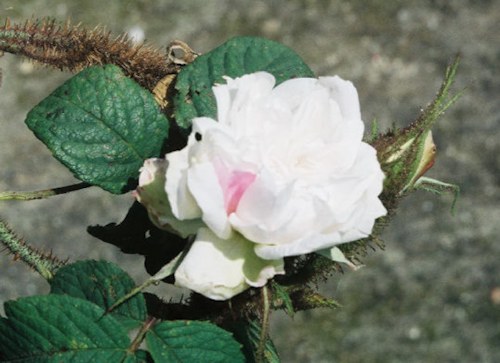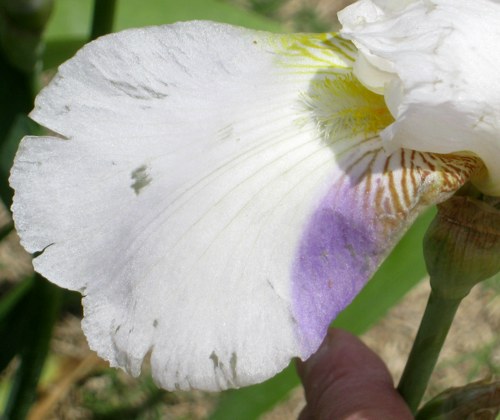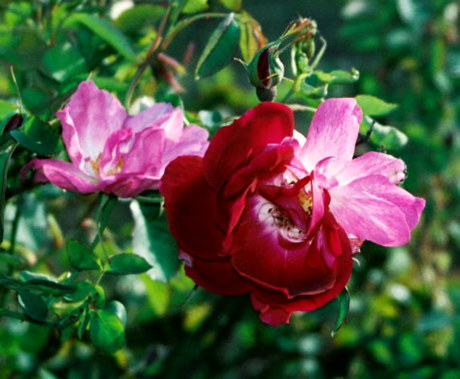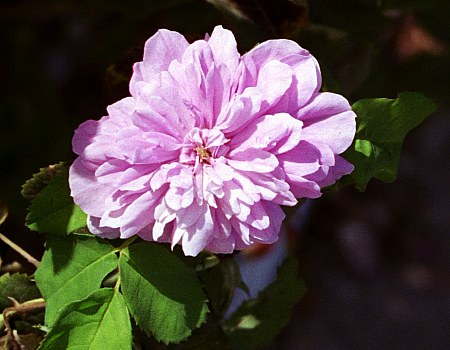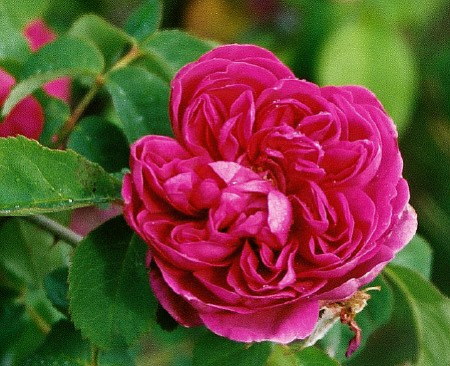About the identity/status of R. moschata, we have pretty good evidence from multiple data points, as well as widespread acceptance, that the widely grown R. moschata that is a reblooming shrub is the same one that was named by Herrmann and the one that served as the original seed parent in the lineage of the Damask as well as the Noisette… and while the author states that R. moschata is a hybrid (“Rosa x moschata”) as if this is some sort of fact, that is actually very much a fringe view; it is and has always been regarded by most as a good species, not some hybrid (again, if we are really supposed to explore this theory rationally, then what are the proposed parents, and where is the direct evidence?). Mattock claims that R. moschata was left out of the 2015 phylogeny because it’s considered to be a hybrid, but the authors did not actually state this anywhere in their work (they don’t mention the species at all, and he doesn’t indicate that it was gleaned via personal communication, either); moreover, they actually included at least one rose in their study that they explicitly regarded as a hybrid (R. x chavinii). It’s one thing to present something as a theory as part of a broad discussion, but to make such claims that go against current knowledge, and without much in the way of evidence, seems highly problematic to me.
Not to pile on (okay, maybe a little), but the photos of R. moschata also bug me–at least one is obviously incorrectly identified (Fig. 51, R. roxburghii hips!), and I’m pretty suspicious about the identity of the plant in Fig. 48 as well. Again, there are similar issues elsewhere in the paper.
Where did the reblooming background come from? Well, in the case of the reblooming Autumn Damask, the repeat flowering would be caused solely by the RoKSN A181 allele, which it would probably have inherited from both R. moschata and from R. fedtschenkoana. The same allele is responsible for rebloom in R. rugosa, and is probably also responsible for the repeat flowering in R. laxa. I haven’t checked to see if there are studies that broaden the search for this gene, but there are other species with similar patterns of repeat bloom that could have this or some similar genetic basis, like R. roxburghii (in the double form, R. roxburghii var. roxburghii), R. bracteata, and some forms of various North American species, and probably others.
I should have said this before already, but Happy New Year to you too! ![]()
